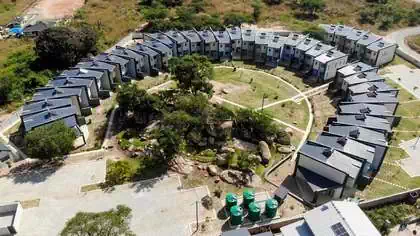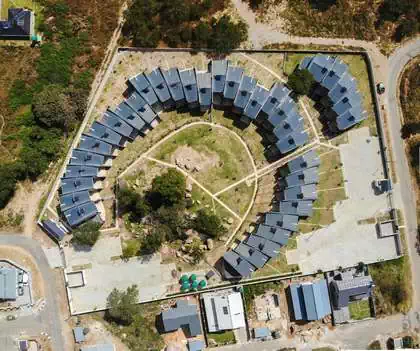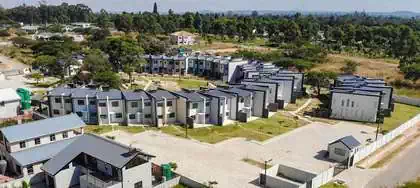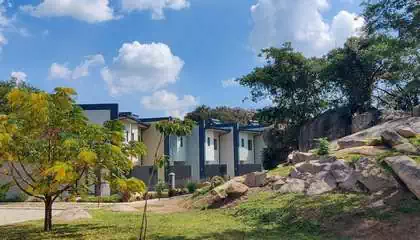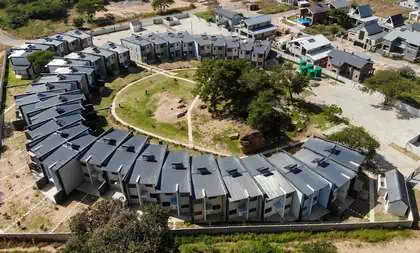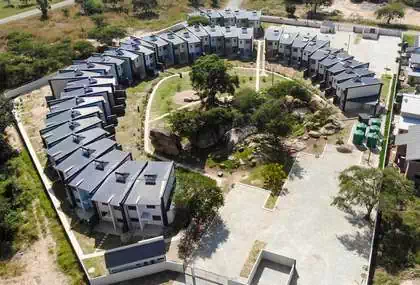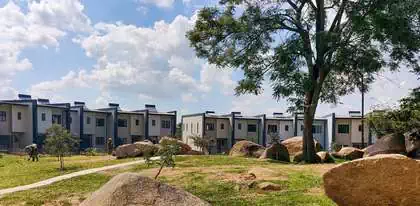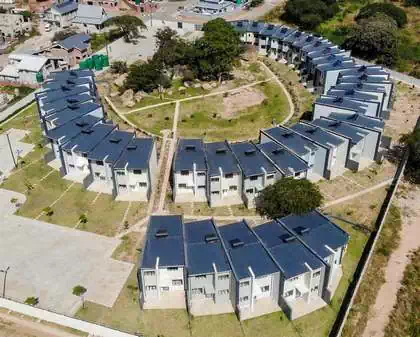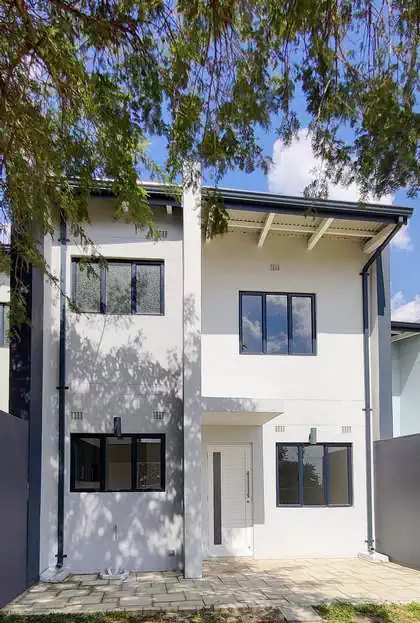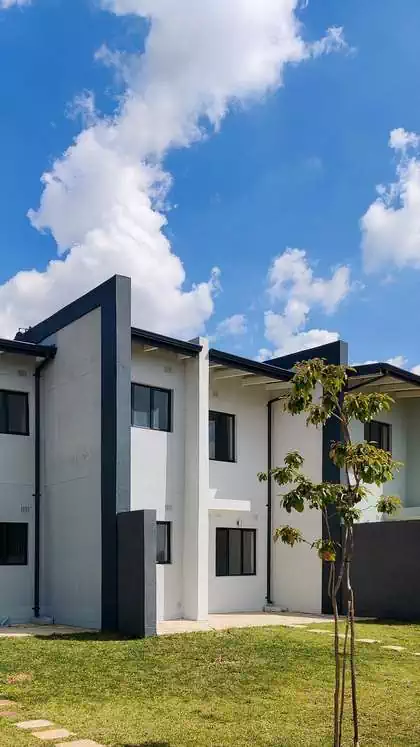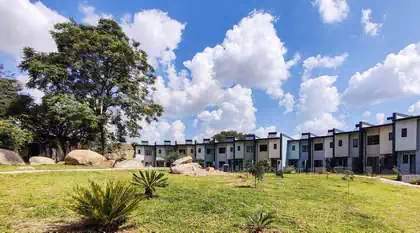Cluster housing design in Zimbabwe
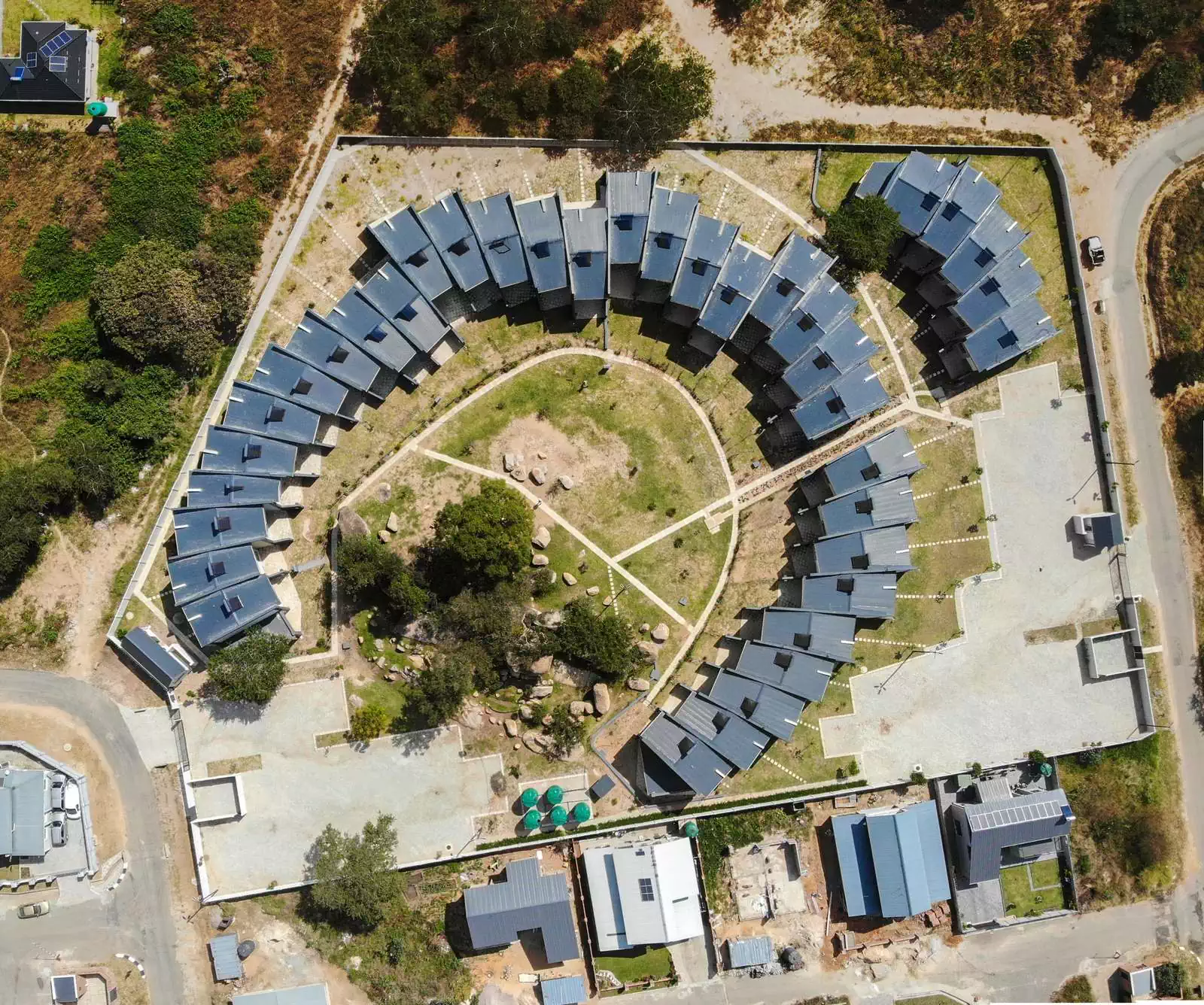
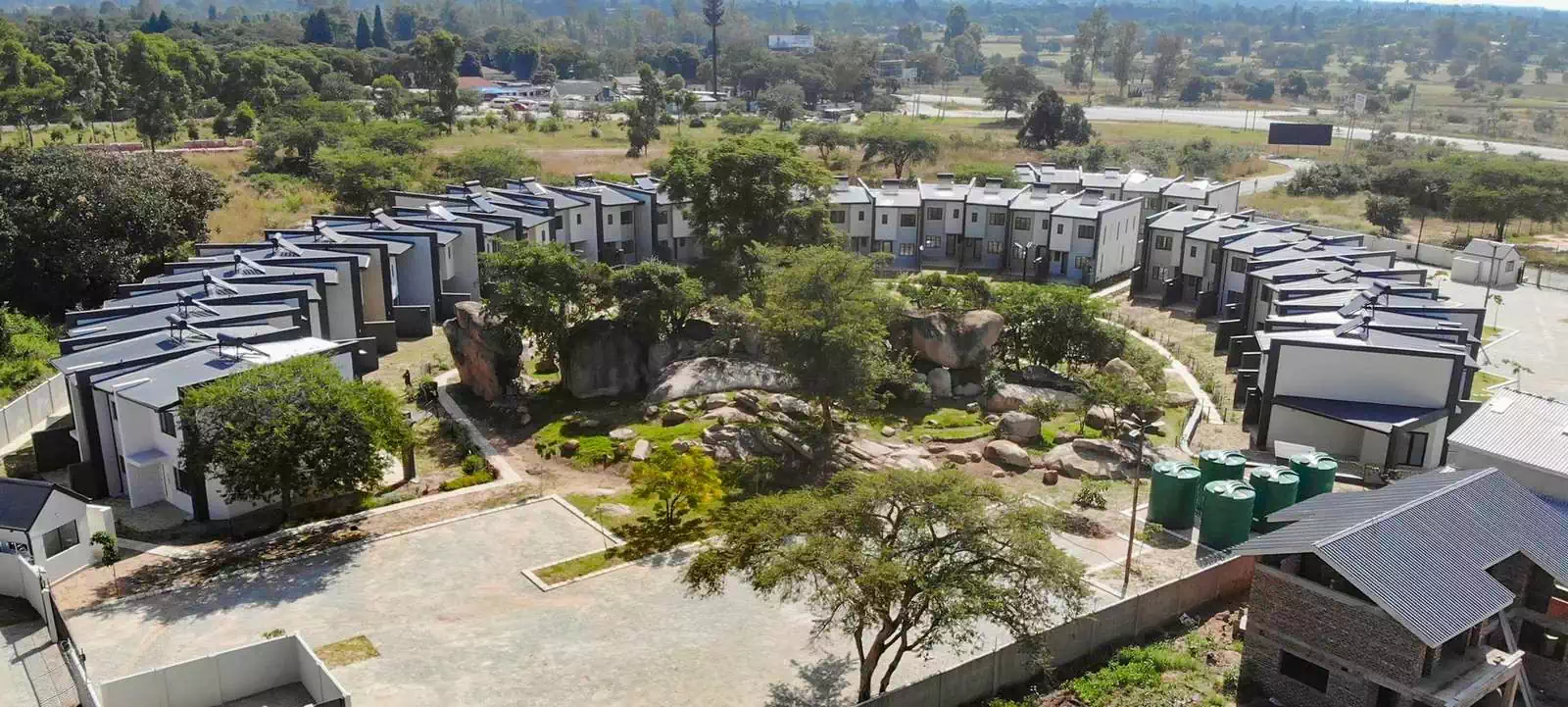

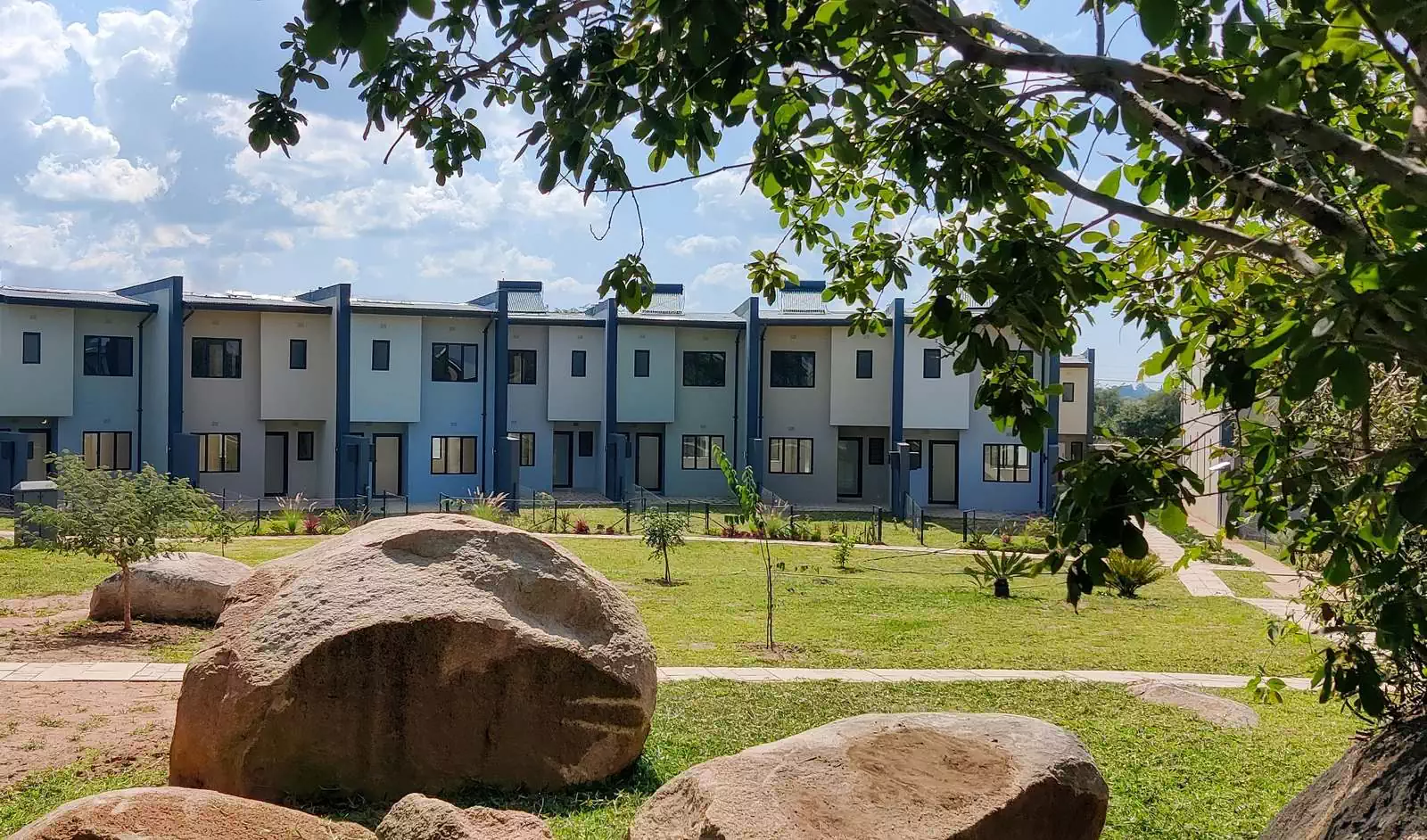
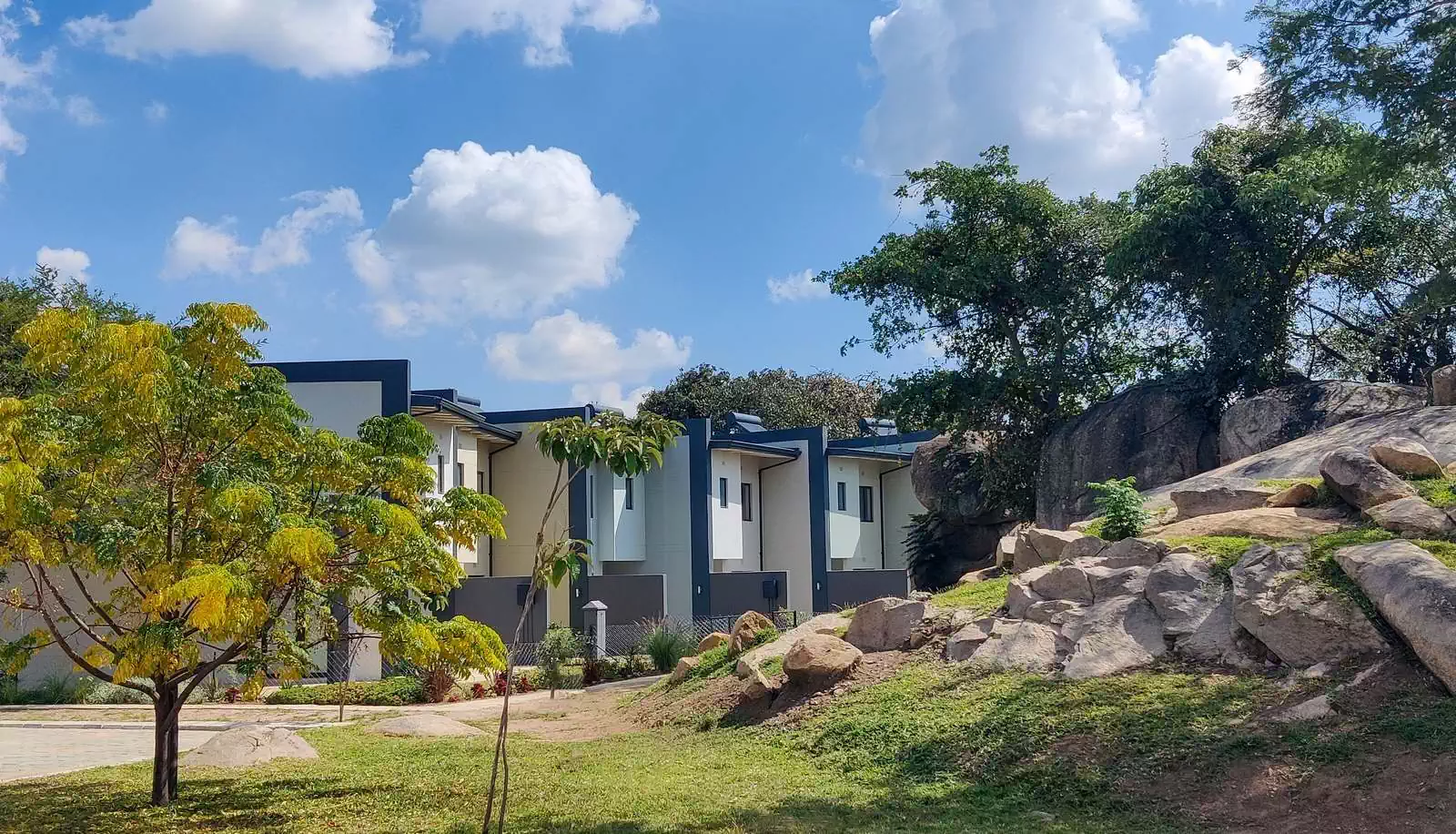



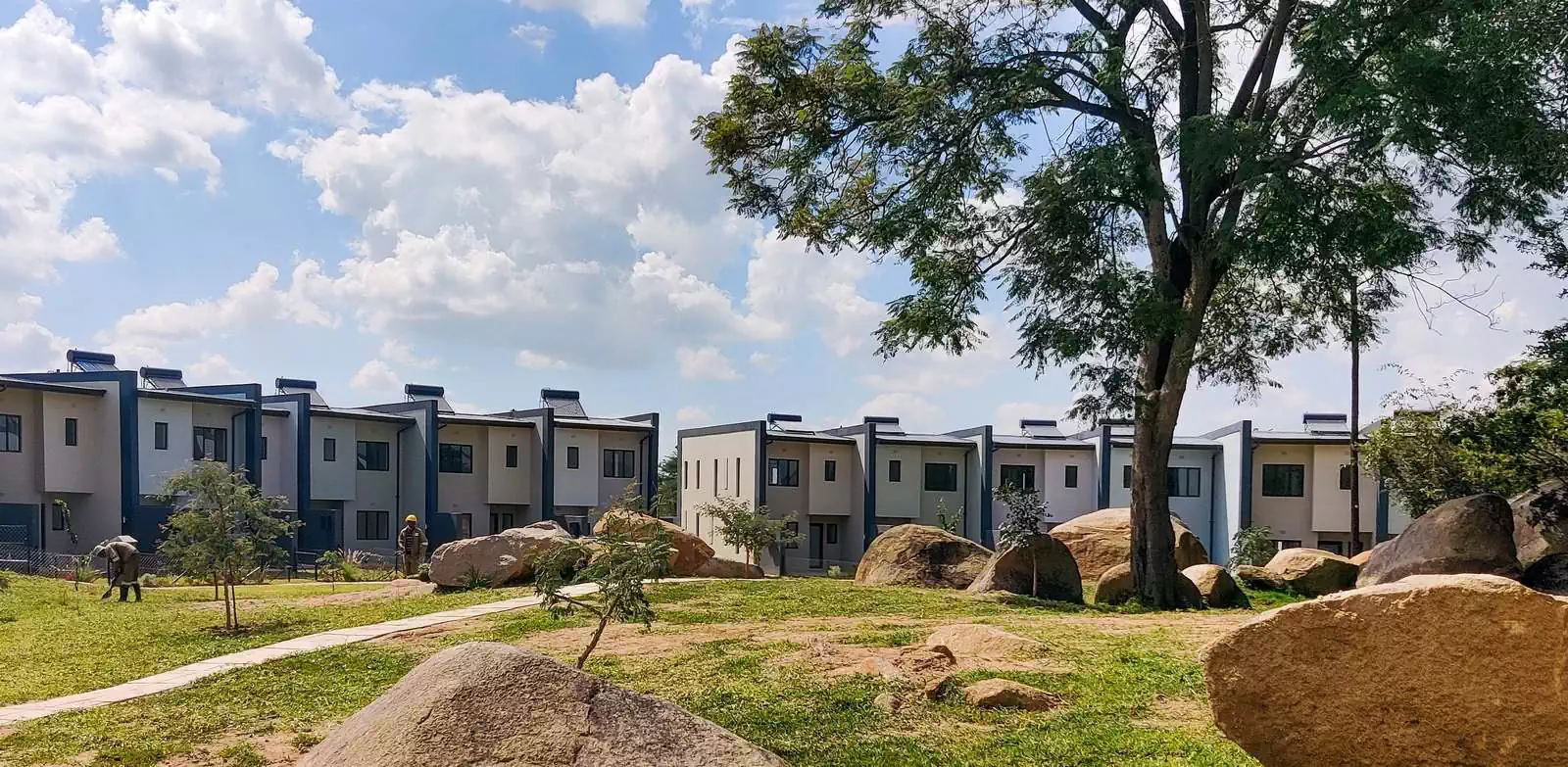
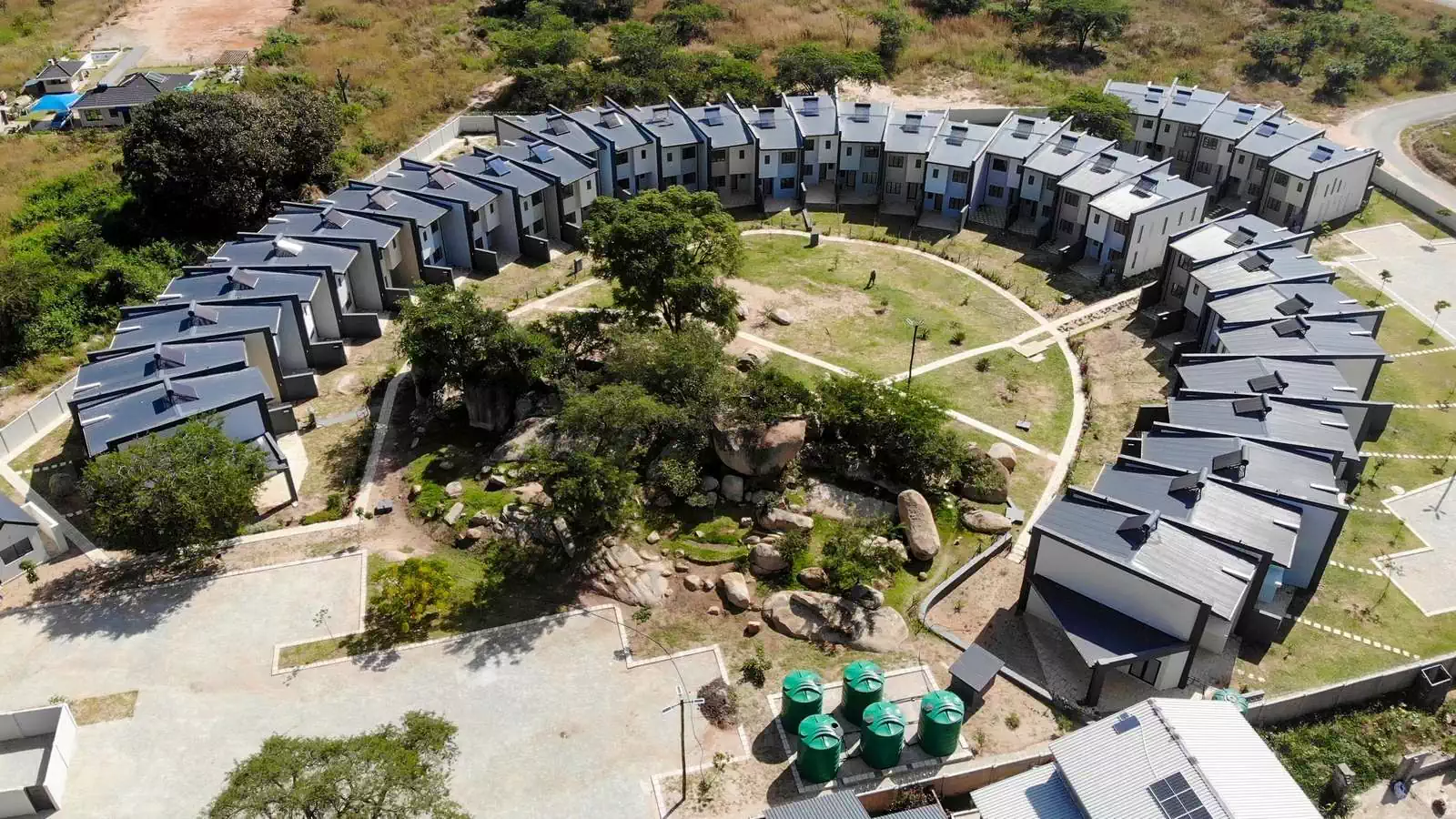


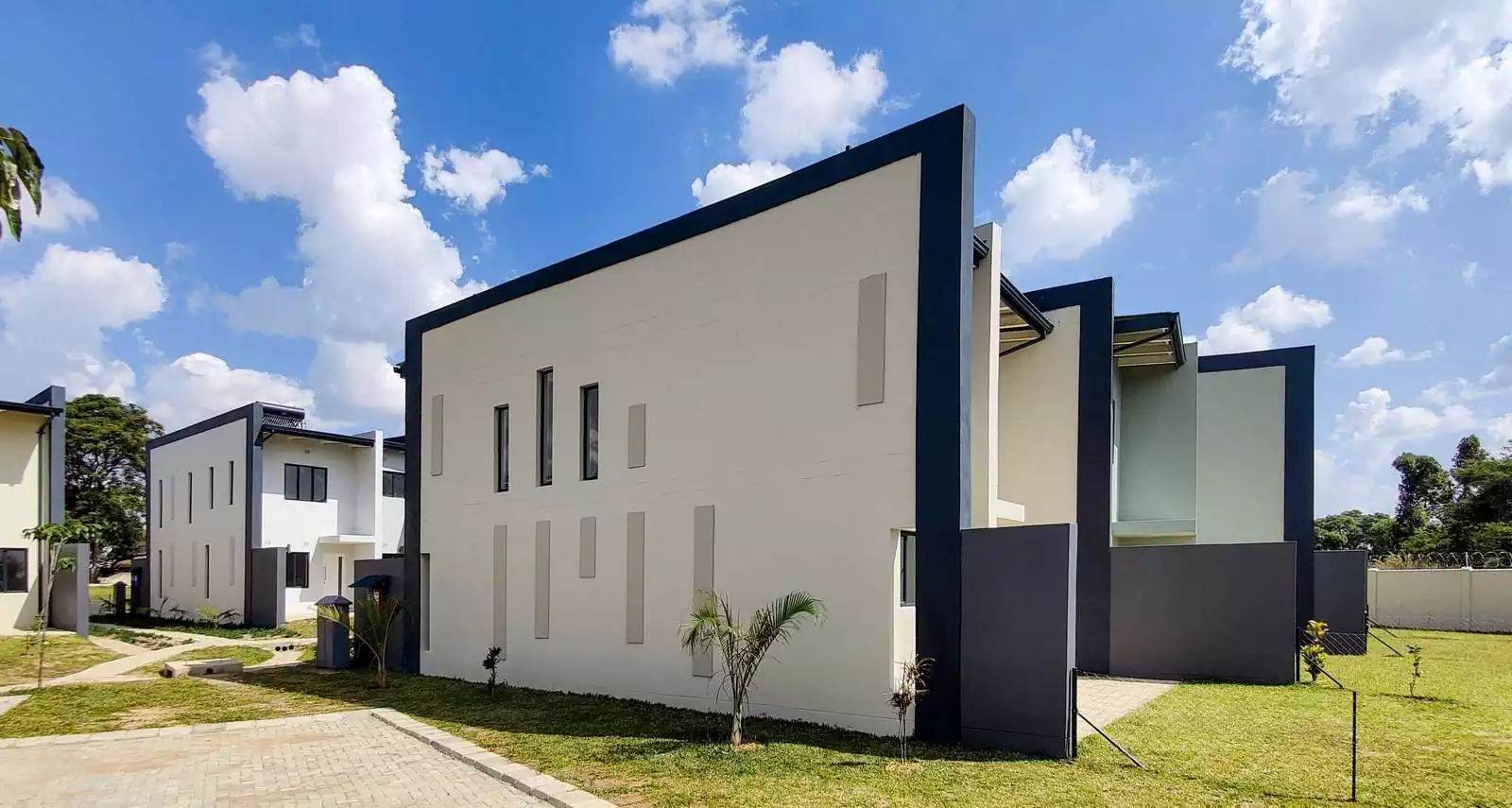


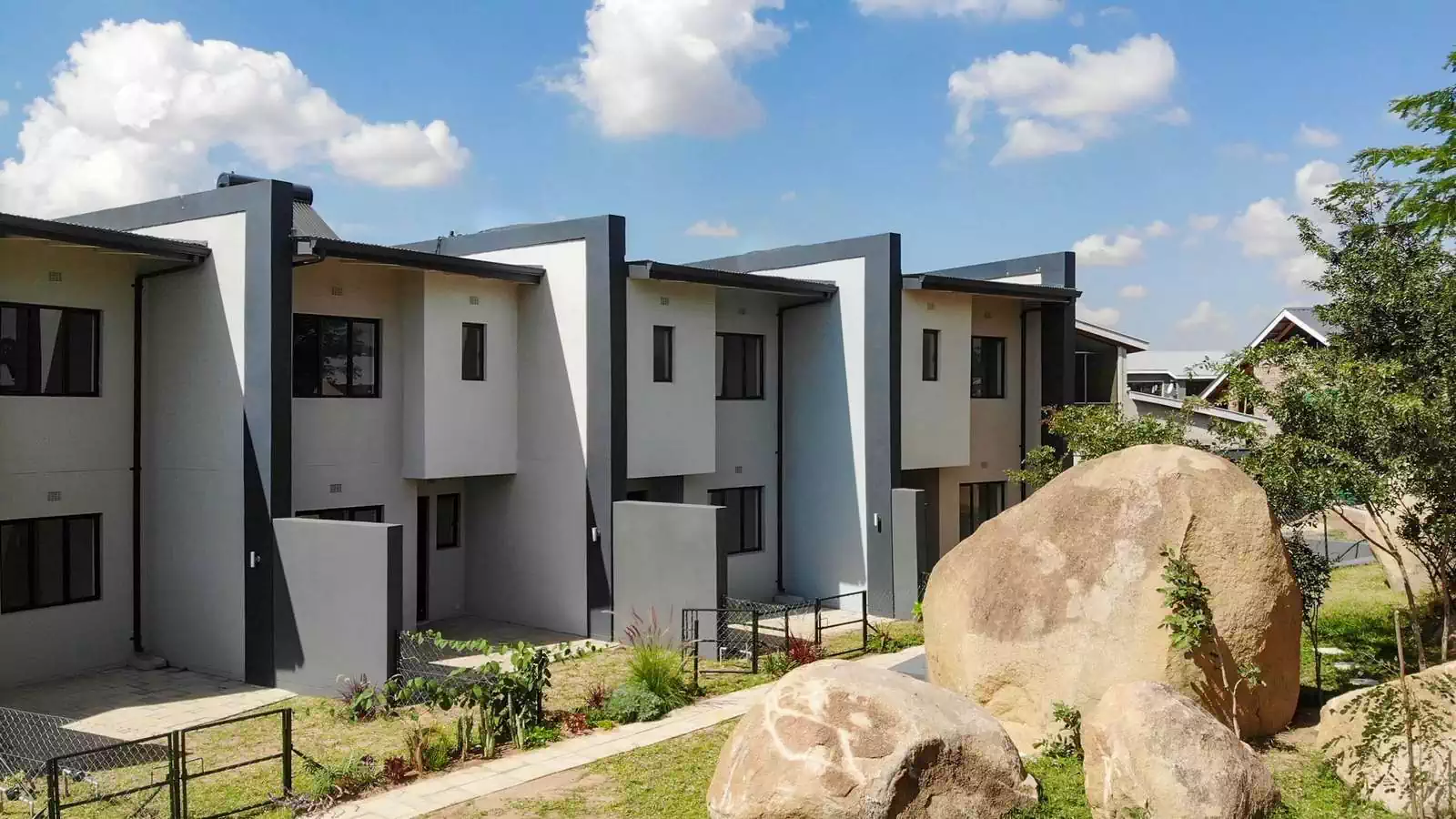
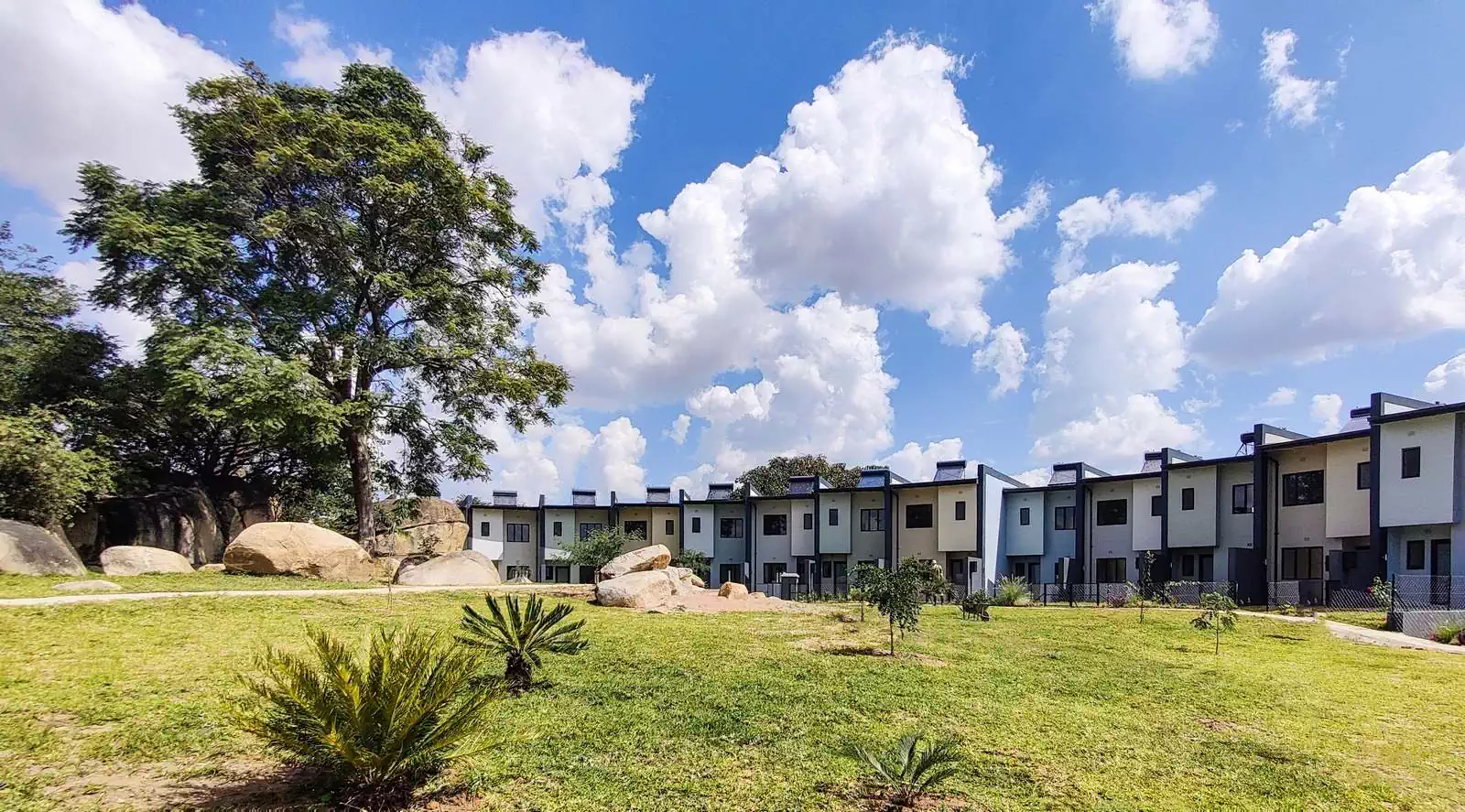

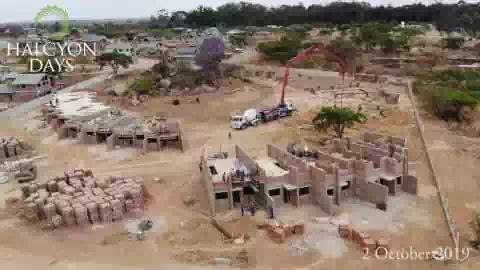

Cluster housing design concept
In the heart of Arlington Estate, by Harare International Airport is a large residential plot originally intended for nearly 40 double story units. We were engaged to redesign the cluster housing that originally envisaged tightly attached cluster houses with a miserable 2-meter back garden facing the boundary wall and the living room on the opposite side facing parked cars. The original residential development design also completely ignored the amazing gomo and vegetation in the middle of the plot and planned for its expensive removal.
We turned the priorities upside-down and argued that the most important aspects of the residential design are the massive boulders and trees and that all houses should have a view of them. Our design priority was to give all living rooms and bedrooms a view of the stunning central area with the natural feature. Additionally, this green oasis would be expanded into a flat field around the hill providing a place for children to play, and adults to recreate and rest while creating social interactions between the generations. The secondary problem was the desire to bring the cars in front of each house dictating the passage of roads through the whole complex thereby ruining any potential views and reducing the greenery present to a minimum. We opted to abolish all the roads and have the occupants park at two parking areas next to the entrance gates. Thus the green areas could be valorised and the central hill area would become a true paradise for all to enjoy.
Modern spiralling cluster design
The cluster housing design focused on bringing all of these pieces together into a cohesive whole in a new, modern interpretation. A spiralling form partly influenced by the position of the central rocky feature and partly by the shape of the plot came out as the resulting form. The individual cluster units were trapezoidal in shape, wider on the external side and narrower internally to fit the architectural concept. Although identical in shape, through the constant rotation and shifting forwards and backwards in relation to the spiral spine, the repetition was eliminated and an interesting look was created. Walkways on the internal and external sides lead to the houses facilitating easy circulation and connections. The curved layout provides a modern and different approach to the classical repetitive cluster design with the units lined along strait roads and watching the neighbours' bedrooms in front of them.
Individual views and privacy
To grant all homes a view of the central area, the repeating units were rotated around the central gomo in a spiral form. Using a more ergonomic form that would also adapt better to the rotation and minimise building costs, the homesadopted a trapezoidal form, narrower towards the centre of the property and wider at the back. The houses were also moved forward or backwards in respect to each other to providea level of privacy from the neighbours. The first floor rooms are also cantilevered above the verandas providing added shelter from the rain and sun. Therefore the sitting area on the veranda becomes a covered extension of the living rooms, effectively extending the liveable space outside and bring nature inside.
Open plan living areas
The individual units all have the main living area facing the private yards and central area, while the sleeping area is located upstairs, separating day and night areas and allowing more parallel events. An open plan configuration was designed making each house feel bigger and more modern. Access to all the units is on the kitchen side, giving privacy to the occupants in the living areas from passing pedestrians.
Financials design considerations
As most housing developemts, the premise of this project was to make a profit for the developer. Significant effort was put into finding cost-effective design solutions in order to minimise the overall construction cost. Shared walls, foundations, plumbing, etc between adjoining units were studied and implemented. Building techniques were kept simple and affordable, while being effective and architecturally pleasing. We aimed to use local materials and fittings or if not available resorted to the SADC region.
Architectural design
The resulting housing complex has a cohesive form centralised around the magnificent natural feature in a modern organic form. The central area will house large lawns for all manners of social interaction between the various occupants thus complementing the aesthetic and functional values in the cluster development.


